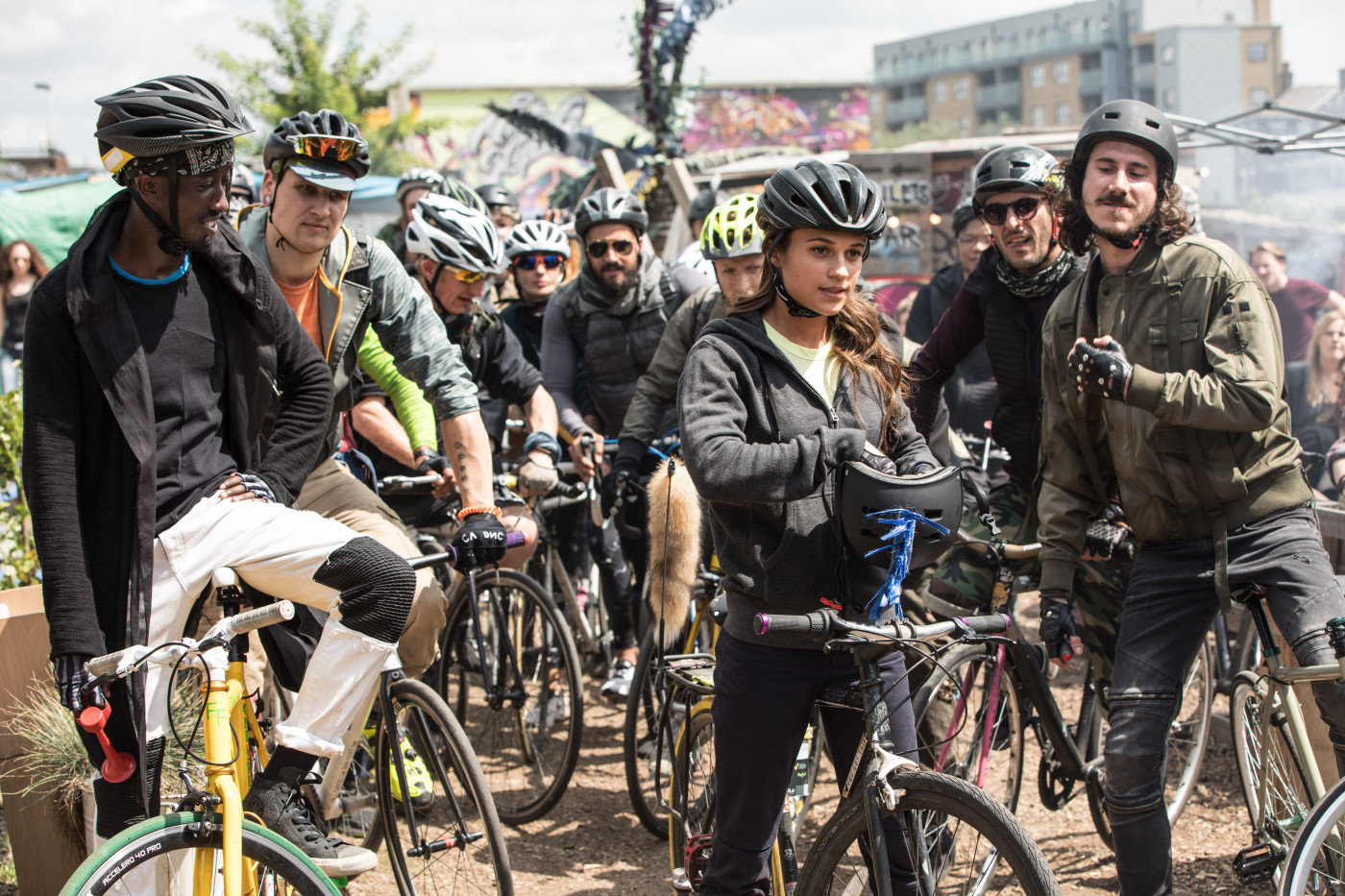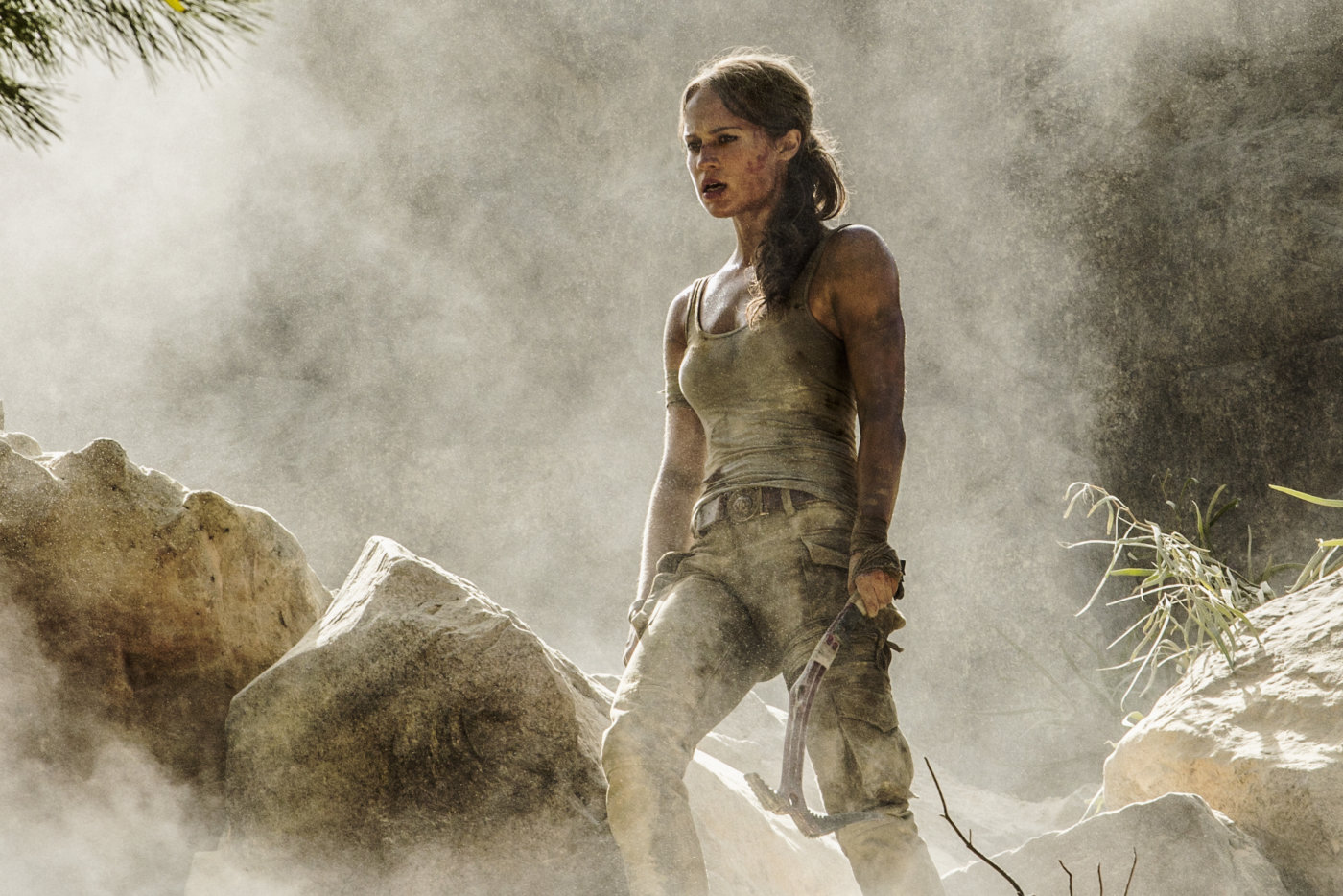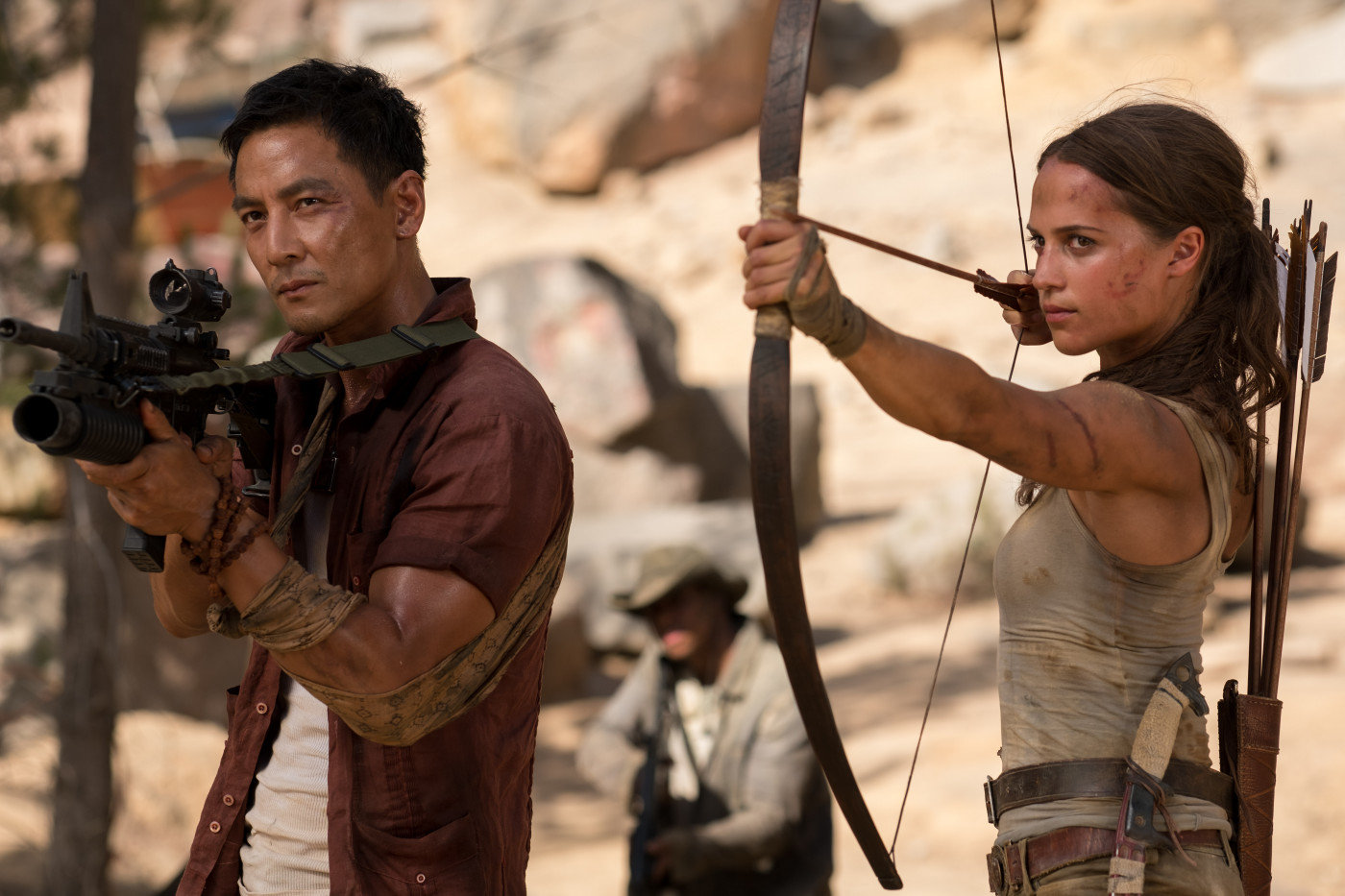Graham King interview: producing Tomb Raider, Hollywood, Rango
Ahead of Tomb Raider's release, we talk to producer Graham King about its making, videogame adaptations, Rango and more...
With a body of movies that includes Michael Mann’s Ali and Martin Scorsese’s The Aviator, producer Graham King seems more atuned to the world of mature, hard-hitting dramas than expensive popcorn flicks. But then again, he’s clearly treating Tomb Raider, the latest adaptation of the hit videogame franchise, as a gritty genre piece rather than a bit of glossy fluff.
This certainly fits hand-in-glove with publisher Square Enix’s own rebooted vision of the 90s heroine; where she was once an outlandishly-proportioned cartoon character who snuck around crypts for a living, 2013’s Tomb Raider reimagined Lara Croft as a survivalist who specialised in getting through deadly situations by the skin of her teeth.
Taking over from Anglina Jolie, the Oscar-winning Alicia Vikander plays the more human Croft, whose search for her father leads to an island of curses and villainy in the middle of the Pacific.
History has proven that adapting videogames for the screen is a perilous mission all by itself, and King’s refreshingly candid about getting Tomb Raider right – it’s all about telling a good story, nothing more, nothing less, he says – but also Hollywood’s nervousness in general. When it comes to getting audiences to leave the warmth of their homes and visit their local multiplex, filmmaking is itself a trap-laden tomb…
I should imagine this was a complicated project to get moving, given all the parts that have to be in place: a property owned by a videogame company, story approval, getting the right star…
Right. It took a while – I bought the rights in 2010 or something like that, so it took a while. We waited for the game to come out in 2013, to try to stick to the game a little bit. And when we saw that, we saw some elements that I thought were really fun – the key is to make a genre picture, but keep the characters as grounded as possible. Get away from, “Set piece, set piece, set piece” and really have her arc where she’s believable as a food delivery person in the East End of London.
Even that, I wanted to stay away from the typical Buckingham Palace, Tower of London that an audience sees. They think it’s New York, a lot of people – they don’t think it’s the East End. We wanted to keep her grounded, and have her slowly transform into becoming Lara Croft. She has that line at the beginning, “I’m not a freakin’ superhero”, you know?
There’s a lot like that. It takes so long to develop, to get the right tone. In this day and age, it’s really tough to figure out what the audience wants, so you just try and do the best you can with the storytelling.
I didn’t realise you’d bought it before the videogames changed the character. Before that she was more of a cartoon character, wasn’t she.
Right. Square Enix had pitched to me the game, and that’s what I found interesting: the character and the transformation. Reinventing, rebooting the franchise. Angelina [Jolie] did this, but [Alicia Vikander] brings something else to the table, you know?

So logistically, what was location filming like? Because London presents one set of issues, but then you’re filming in the wilds of South Africa.
It was fun. It was my third picture down there, because I’d done Blood Diamond and Ali. It’s a long way from LA that’s for sure, but it was the right location for what we needed – we needed to be on an island, and Gary Freeman, our production designer, did such a fantastic job of giving that feel. Logistics, giving in a jungle in 100 degree heat, running up and down the hills, was tough.
For me, it was all about her performance – she’s basically in every scene of the film, and she just worked her arse off every day. She did it with so much enthusiasm that we all had fun doing it. I take my hat off to her – I’ve made a lot of films and been involved with the way actors work. She was on set every day working out – 6.30 in the morning in the gym, hair and makeup, on set, shooting the whole day in the heat, going home, resting for a few hours and then coming back to do it all again. I think it was a 100 day shoot or something, so it was a long shoot.
Again, the cast usually drive the momentum of the crew, and she was certainly doing that, and doing it in a very positive way, which I think shows.
So how long was the casting process to find Alicia Vikander?
Actually, it wasn’t very long. The press were talking about it more than we were actually dealing with it – they were coming up with all these different names. But for us it was always, can we get someone that would be unexpected. Getting the Oscar-winning Danish Girl actor to play Lara Croft was a delight for all of us. I mean, she was the first person we went out to. She really took to the groundedness and emotion of the story. I have two daughters, and can relate to that kind of bonding moment that one has.
Again, there were a lot of times where we would shoot scenes and we’d forget we were making a genre picture called Tomb Raider; Dominic [West, who plays Lord Croft] – we have great actors, great talent. Daniel Wu brought something more to the table. A lot fo the times, we’d show up and talk about a scene, change little bits and pieces – that’s what so fun about making films, is that you collaborate on the day. Maybe this doesn’t work, maybe we should try that.
As I say, having these four really talented actors in a room to make this genre picture – and doing scenes like the one in the cave, is pretty emotional. That storyline I really liked – if I pitched that as a film, people would get excited just about that.

Is it about trying to forget that it’s a videogame, in a way? Because there have been loads of videogame films before and you’ve probably had loads of questions today about those kinds of movies. But is it a case of being a genre film first and foremost?
Yeah, we didn’t even think of that. I mean, Assassin’s Creed came out while we were shooting, so I’m going, “Wow.” You know, they’re not connecting with the audience for some reason, these films. So for us, it was, again, let’s get on and tell this story. Again, you could make anything nowadays – who knows what’s going to connect? I couldn’t guarantee a star-driven movie now, right? Who knows. So if you feel you’ve got a strong enough story, and again, it’s always ‘keep it as grounded as possible’, then I think you can connect with them. Whether it’s videogame [based] or not. I think people can go and see this movie who are not videogamers; just a normal movie-going audience, grown-ups, could go and see this film and say, “I’m not interested in gaming, but I’m interested in this storytelling.”
Hopefully we can win that way. It’s a crapshoot right now. Some films I see and then I see the numbers they’ve done, and I’m, “Wow”. The best thing for me in the last few years was seeing Dunkirk’s numbers: a World War II film coming out in the summer on a big platform. It was huge.
So from a producer’s perspective, is there a certain amount of nervousness in the industry right now?
There’s a complete nervousness about what you’re gonna make, and what will the studios… there are a handful of producers that make studio films, and make what studios will really get behind and spend money on. Getting an original story greenlit by a studio is so tough nowadays – they all just put up that sign, ‘Netflix’ or whatever. We live in that world. For me, I feel there’s still a market out there for people to go to the cinema and enjoy the storytelling.
The numbers show that there is. It’s just about connecting and getting that right story. You know, I watch TV and Netflix like everyone else does, and some of the shows on there are unbelievable. They’re so well made that you’ve got to match that. You can’t have someone going to the theatre and say, “I can stay at home and watch something much better than that.” And that’s what people are doing. As a producer, you always say to a marketing department at a studio, how are we going to get kids or an audience out of their homes to see this film? What’s going to make this film special? It’s all in the marketing a lot of the time, in the selling of the film.

It must be a difficult balancing act between creating the spectacle that people expect from a big-screen film like this, but keeping what you were talking about – a story about a father and daughter, that kind of thing.
It’s a balancing act. We thought we could get away with fewer set-pieces but more storytelling, because again, how many times have you been to a movie… you’ve seen the visual effects shots, you’ve seen the set-pieces. To me, unless you have something amazing, you have to have a story behind them. I think we do; I think when she falls into that river, it’s basically her on screen alone.
It’s an interesting director choice, Roar [Uthaug], because he’s good at that elemental feel to the water and the weather.
We all saw The Wave and thought we had a real talent here. For me, it’s really fun and exciting to find someone who’s not on the studio list, who’s not a recognisable, marketable director. But he’s someone that loved the story and the grittiness of it. He just went along with the film we were making – it fitted. When Roar came over, we sat for quite a few days. We could tell he wanted to take it to the same place we did, so it all kind of fitted together. It’s always fun when you can build a career out of this – and build someone else’s career.
What was the most challenging aspect of the film, given everything you said?
When you’re making a film at this level – big budget – you’ve gotta make sure you’ve got the look right, the visual effects right. Everything’s a hurdle you have to cross, but on a picture this size, especially. The more it grows and the more the expectations grow, the more you’ve got to stand behind what you’re doing. We didn’t have one moment where we went, “Oh fuck it”, type of thing, you know. We were a team going in, and everyone was engaged emotionally with the film. But I’d say it was the physical challenge, and again, being with Alicia, and seeing how she’s going through it day by day. For me, that was an eye opener. I’ve never seen someone working so hard like that, and I’ve made a lot of films with big talent.

So getting this together compare with something like Rango? Because that was such a brave, quirky film. ILM hadn’t even made a feature film before, so…
Right! Well that was Gore [Verbinski, director]. Gore wanted ILM and didn’t want to hear about anything else. Rango was something that he was passionate about at a very early stage, and we would talk about it and talk about it, and then we came up with this plan to spend some money on it, do some very early sketching and pre-viz, then we put all the studios in a room and showed it, and pitched it. And of course we had Johnny Depp. That’s kind of how it grew; Paramount came along and said, “We love it. Let’s do it.
Wow. I’d never made a film like that before. It took so long, with the detail and everything else. It was all driven by Gore’s passion to tell that story. Again, it was kind of a grown-up animation film; I remember we had a couple of previews where we just had 15 year-olds in it, and they were like, “What the hell is this?” Type of thing! [Laughs] So we knew what we had going in, and our expectations weren’t of a Disney-type animation. But it was a lot of fun; shooting was fun with the characters. Gore wanted everyone to be in costume and act like they did in the film, not just doing the voice-over. It was fun.
Is that the challenge for you as well, as a producer? To find those unusual stories that inspire that level of passion?
I like real-life stories. If you think of Mohammed Ali and Howard Hughes. I gravitate to the darker side of people’s lives. But we live in a world right now, like I said earlier, where it’s very easy for Amazon and Netflix… you’ve got to be careful with what you want to make. And more realistic about what an audience will show up to. The hardest thing in my job is finding that next story to tell; what am I making next? Getting emotionally attached to it. Because all of my films, I’m usually very emotionally attached to them.
Is that what studios are doing in general? Looking beyond superhero movies, that are already a part of the pop-cultural landscape, but also looking at what might beyond that? Are they wondering whether adaptations of videogames are the next thing?
I think they’ve always had a bad rap, right? Because the movies quite honestly haven’t been good enough. Hopefully we’re going to change that, but who knows? Again, Hollywood is so fickle, in a way: if something works, it’s “Let’s do this. Let’s make copies of that.” So the climate we live in today, for me anyway, it’s what can I take to a studio? What can I pitch to them that they’ll get behind? Not just development, because I hate that – you want a greenlight. You want to know you’re making your film.
It’s tough. It’s tough. All the great writers are doing television, right? Look at some of these TV shows that are written by top theatrical writers. They want to know their show’s getting made or their film’s getting made, and not just stick it in a studio for five years and then not get the [greenlight], and everything else.
There are some producers that can sit with writers and can say, “This is going to get made – we just have to do it the right way.” You’ve got to be more careful about how much you spend on each picture, and does it really warrant that? We’re in a risk-taking business, right? So for studios to be very conservative is never going to work; they all need slates, they all need films. So it’s just, can I fit in the right studio with the story I want to tell? Does it match up with what they want to do? Otherwise it becomes a whole new layer of problems for a producer!
Graham King, thank you very much.